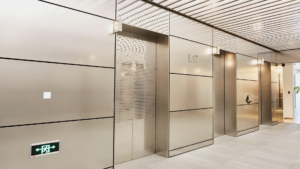Elevator components form the intricate system responsible for transporting passengers safely between floors in buildings of all sizes. Ensuring passenger safety is paramount in the design, installation, and maintenance of these components. Let’s delve into the crucial functions of elevator components and how they work together to uphold safety standards.
At the heart of any elevator system are its components, meticulously engineered to perform specific tasks. Elevator components encompass a wide array of parts, including motors, cables, brakes, control systems, and doors, all essential for the smooth and secure operation of the elevator.
One of the primary functions of elevator components is to control the movement of the elevator car. Motors, typically located at the top or bottom of the elevator shaft, power the system by converting electrical energy into mechanical energy. These motors drive the elevator car either up or down, guided by sturdy cables attached to the car and counterweight. Elevator components such as pulleys and sheaves help to distribute the weight evenly and ensure smooth movement.
Safety mechanisms are integrated into elevator components to prevent accidents and protect passengers. For instance, brakes play a critical role in stopping the elevator in emergencies or when power is lost. Safety sensors detect any obstructions in the doorways, ensuring they do not close when passengers are entering or exiting. Additionally, emergency communication systems provide passengers with a means to summon help if needed.
Door systems are another vital aspect of elevator components concerning passenger safety. Doors must open and close reliably to prevent passengers from accidentally falling into the shaft. Interlocks and sensors ensure that the doors remain securely closed while the elevator is in motion and that they reopen if an obstruction is detected.
Regular maintenance and inspection of elevator components are essential to guarantee their continued safe operation. Qualified technicians inspect and lubricate moving parts, test safety features, and replace worn components to prevent malfunctions and minimize the risk of accidents.
In conclusion, elevator components play a crucial role in ensuring passenger safety. From motors and cables to brakes and door systems, each component performs a specific function that contributes to the overall safety and reliability of the elevator. Regular maintenance and adherence to safety standards are vital in upholding the integrity of these components and ensuring the safety of passengers. As technology advances, so too do the safety features integrated into elevator components, further enhancing the passenger experience and peace of mind.


